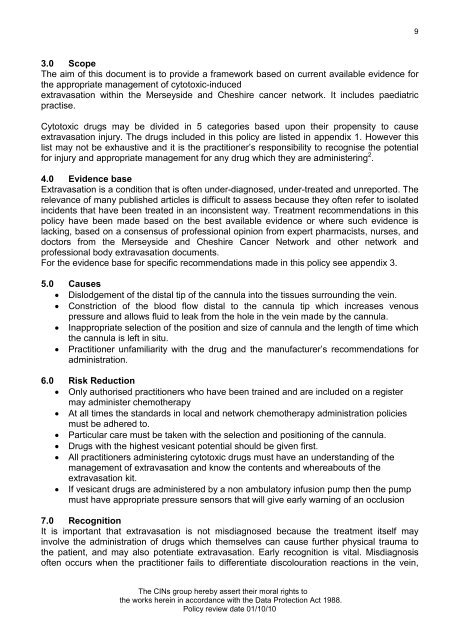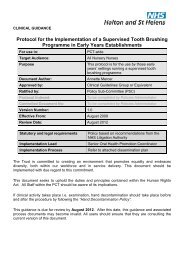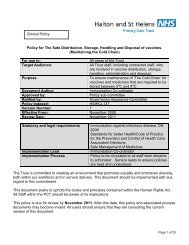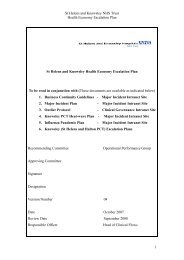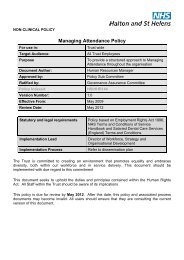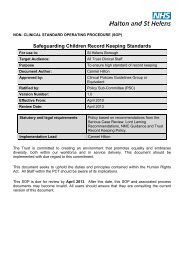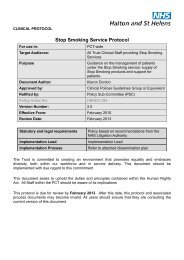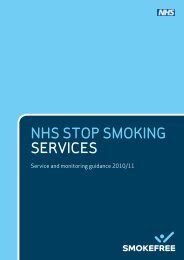Collaborative Intravenous Nursing Service (CINS) Guidelines
Collaborative Intravenous Nursing Service (CINS) Guidelines
Collaborative Intravenous Nursing Service (CINS) Guidelines
- No tags were found...
You also want an ePaper? Increase the reach of your titles
YUMPU automatically turns print PDFs into web optimized ePapers that Google loves.
93.0 ScopeThe aim of this document is to provide a framework based on current available evidence forthe appropriate management of cytotoxic-inducedextravasation within the Merseyside and Cheshire cancer network. It includes paediatricpractise.Cytotoxic drugs may be divided in 5 categories based upon their propensity to causeextravasation injury. The drugs included in this policy are listed in appendix 1. However thislist may not be exhaustive and it is the practitioner’s responsibility to recognise the potentialfor injury and appropriate management for any drug which they are administering 2 .4.0 Evidence baseExtravasation is a condition that is often under-diagnosed, under-treated and unreported. Therelevance of many published articles is difficult to assess because they often refer to isolatedincidents that have been treated in an inconsistent way. Treatment recommendations in thispolicy have been made based on the best available evidence or where such evidence islacking, based on a consensus of professional opinion from expert pharmacists, nurses, anddoctors from the Merseyside and Cheshire Cancer Network and other network andprofessional body extravasation documents.For the evidence base for specific recommendations made in this policy see appendix 3.5.0 Causes• Dislodgement of the distal tip of the cannula into the tissues surrounding the vein.• Constriction of the blood flow distal to the cannula tip which increases venouspressure and allows fluid to leak from the hole in the vein made by the cannula.• Inappropriate selection of the position and size of cannula and the length of time whichthe cannula is left in situ.• Practitioner unfamiliarity with the drug and the manufacturer’s recommendations foradministration.6.0 Risk Reduction• Only authorised practitioners who have been trained and are included on a registermay administer chemotherapy• At all times the standards in local and network chemotherapy administration policiesmust be adhered to.• Particular care must be taken with the selection and positioning of the cannula.• Drugs with the highest vesicant potential should be given first.• All practitioners administering cytotoxic drugs must have an understanding of themanagement of extravasation and know the contents and whereabouts of theextravasation kit.• If vesicant drugs are administered by a non ambulatory infusion pump then the pumpmust have appropriate pressure sensors that will give early warning of an occlusion7.0 RecognitionIt is important that extravasation is not misdiagnosed because the treatment itself mayinvolve the administration of drugs which themselves can cause further physical trauma tothe patient, and may also potentiate extravasation. Early recognition is vital. Misdiagnosisoften occurs when the practitioner fails to differentiate discolouration reactions in the vein,The CINs group hereby assert their moral rights tothe works herein in accordance with the Data Protection Act 1988.Policy review date 01/10/10


